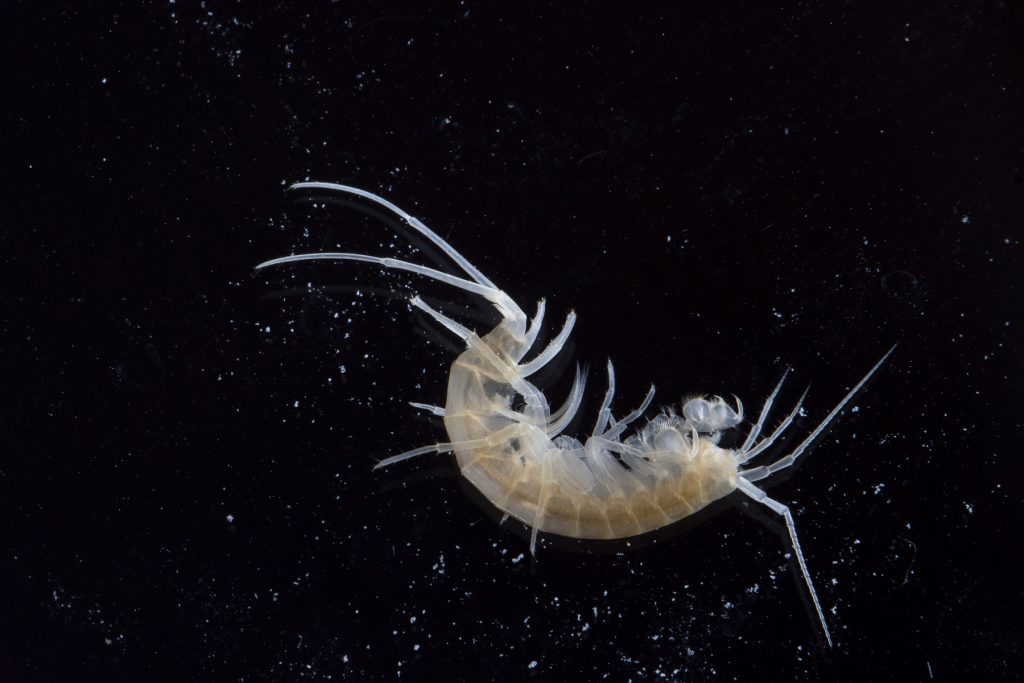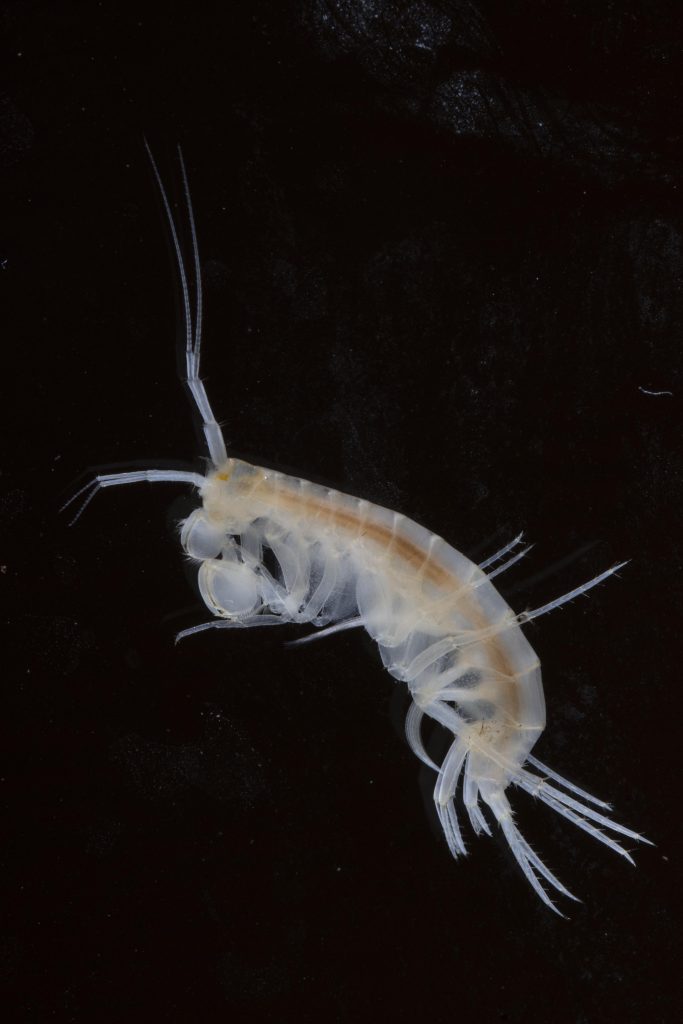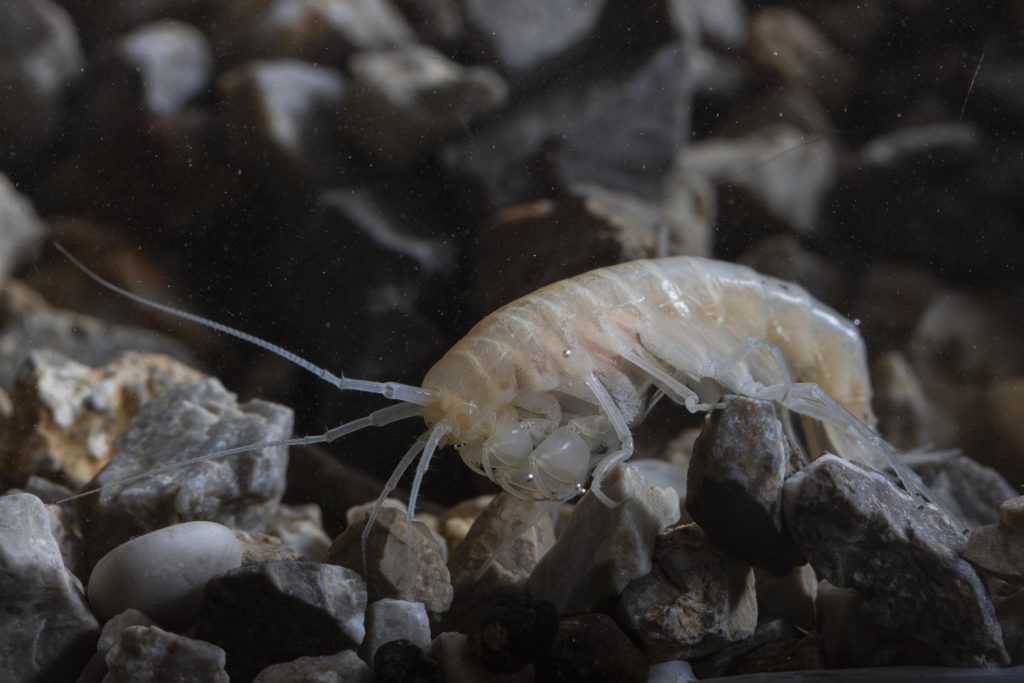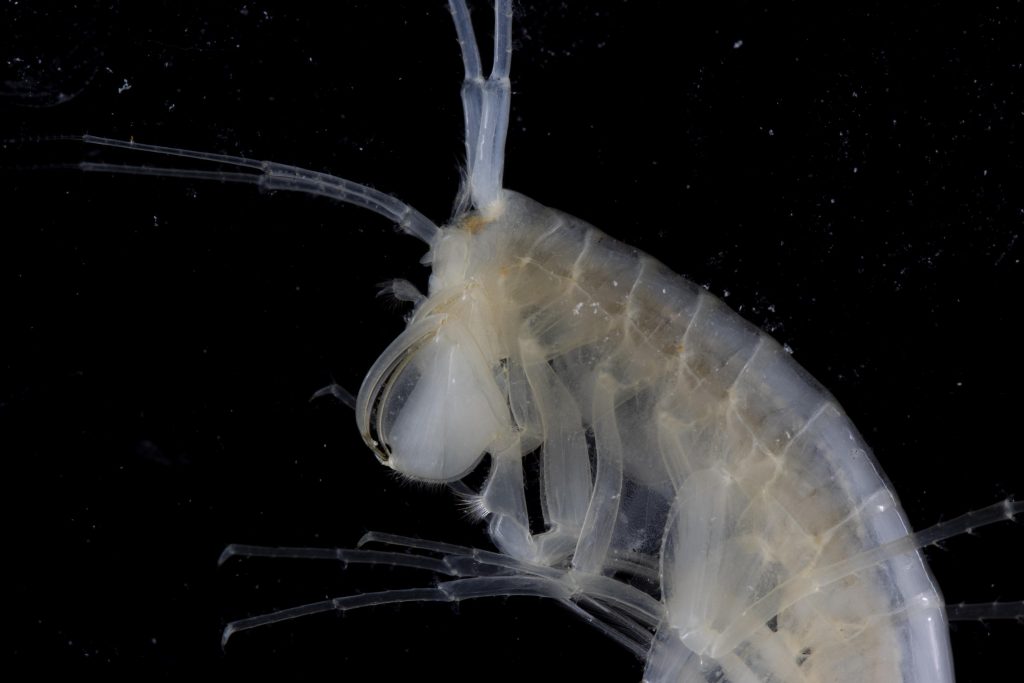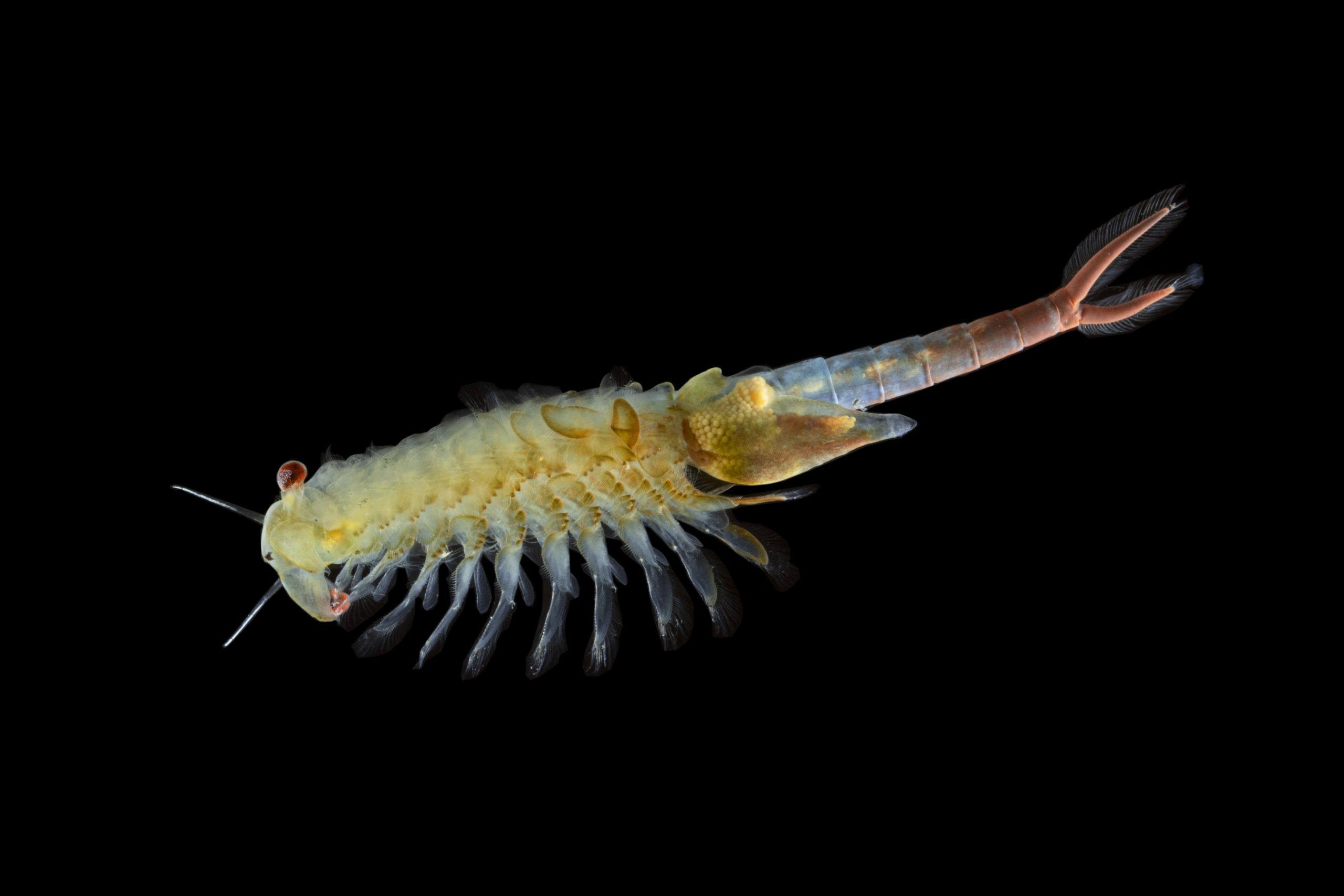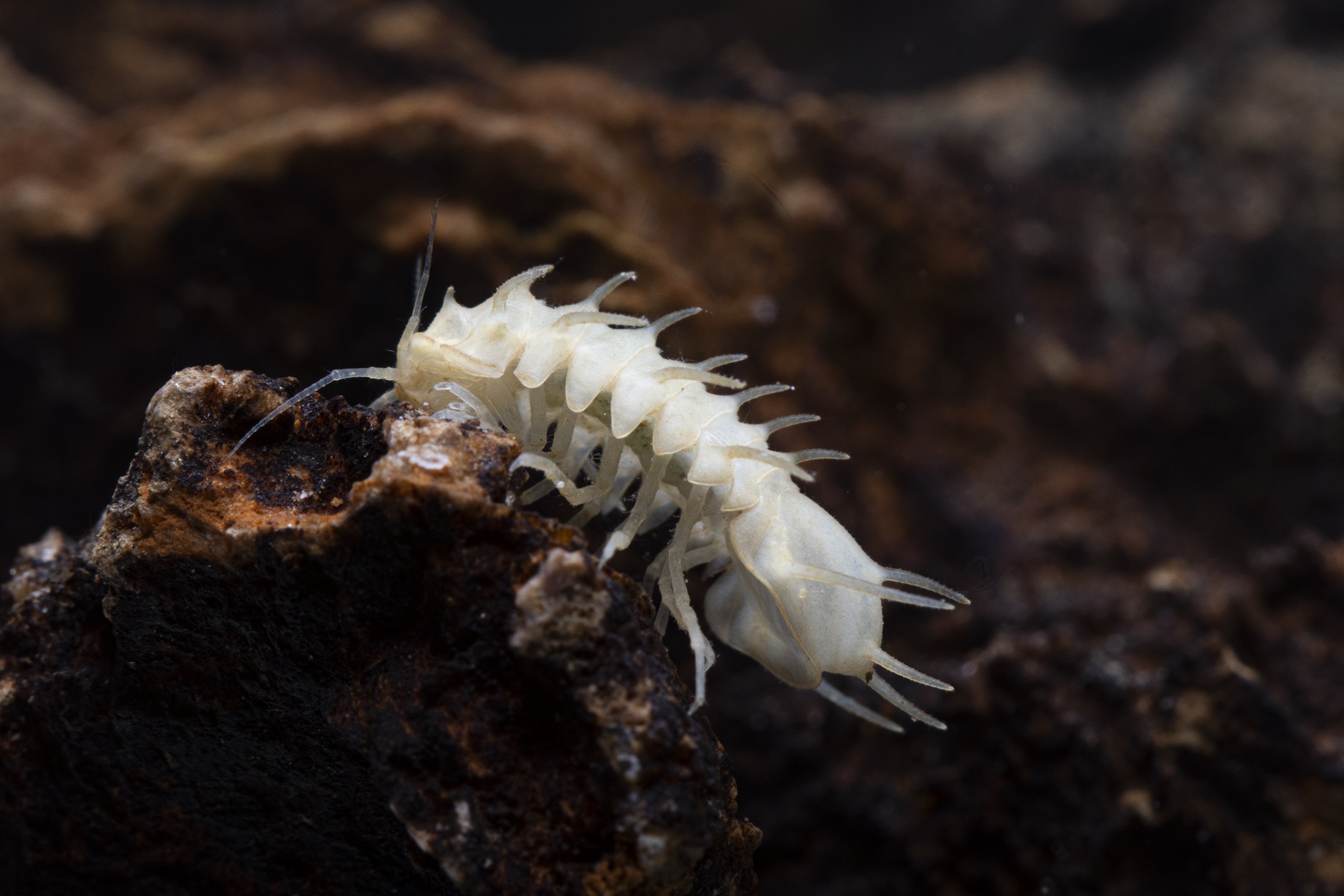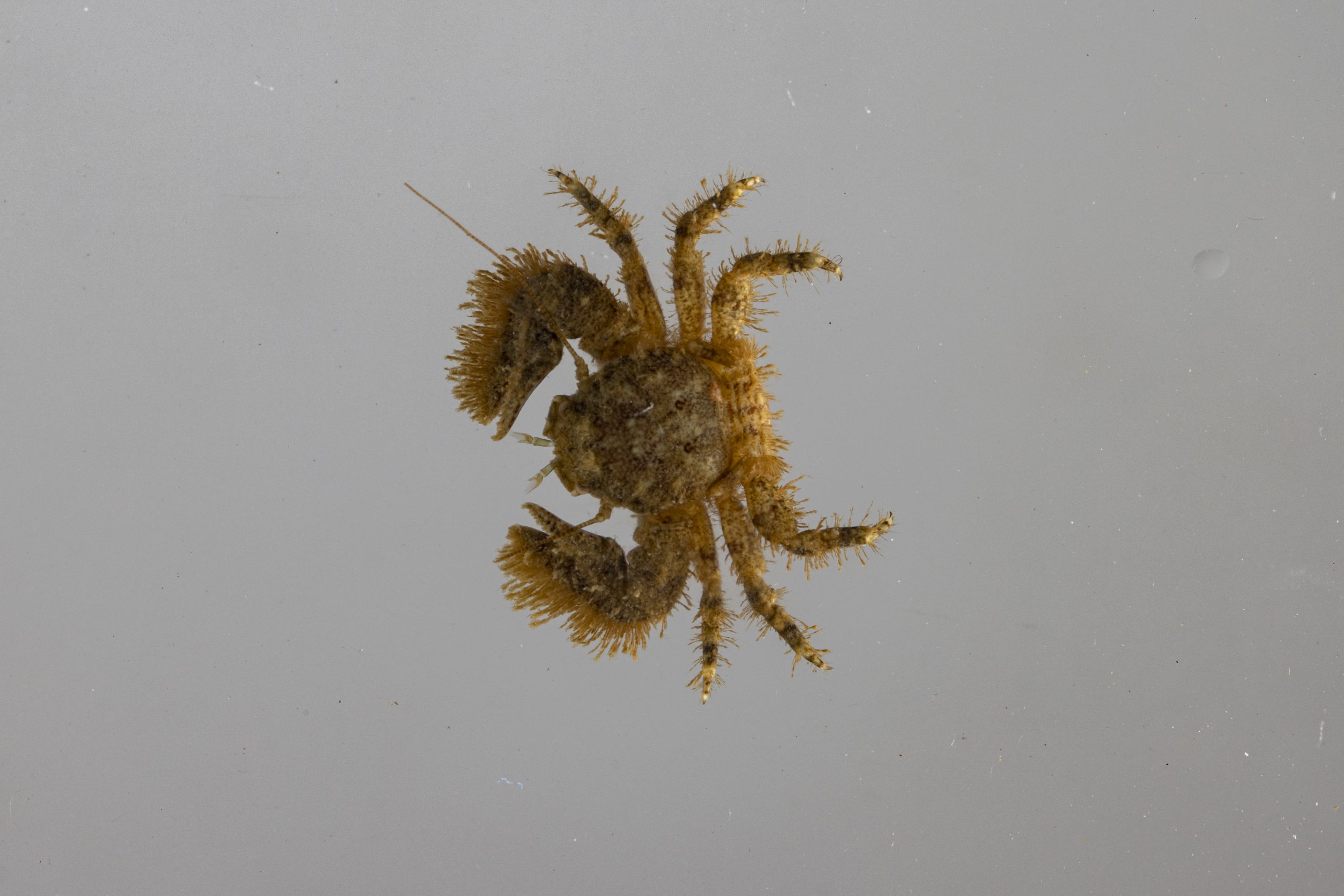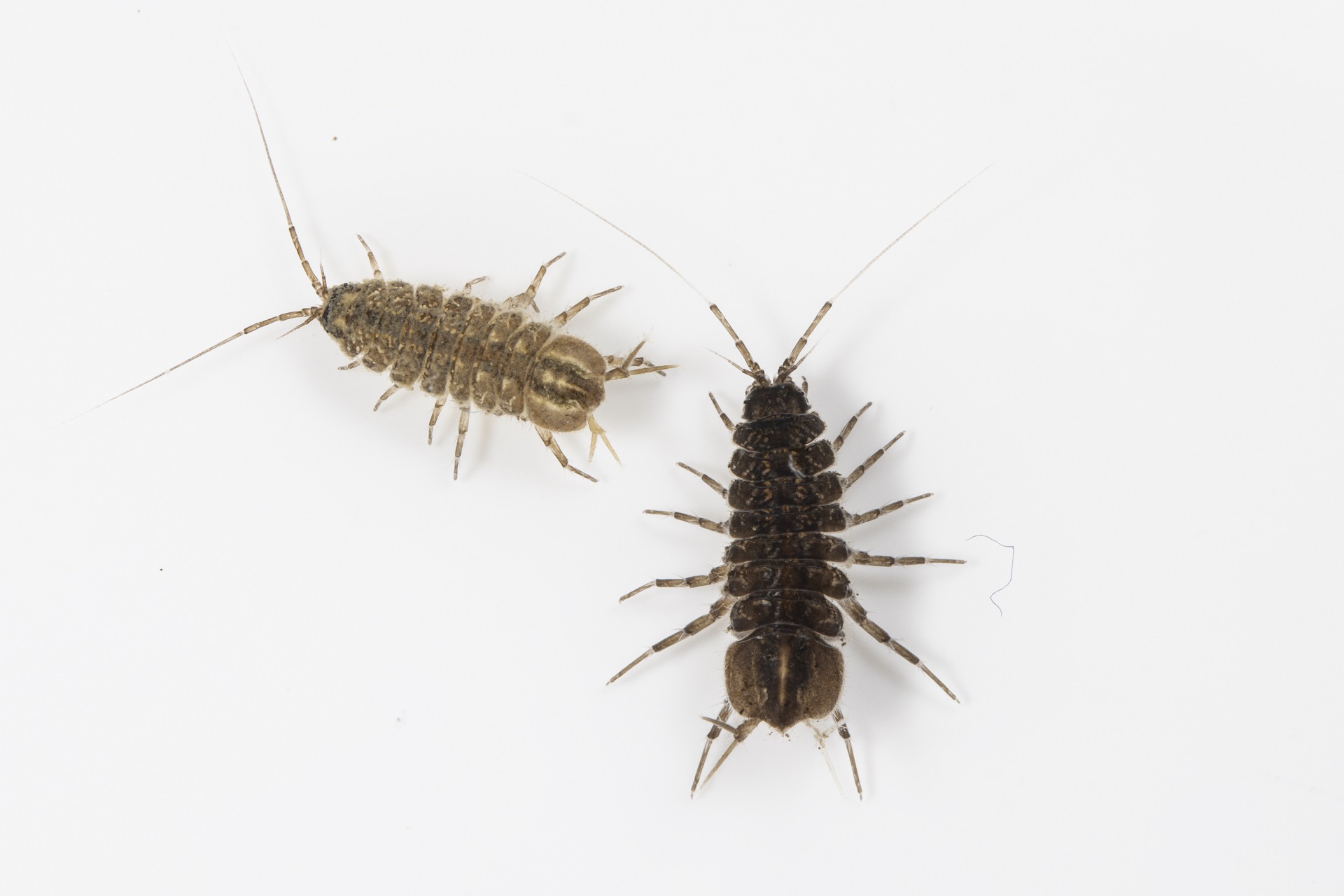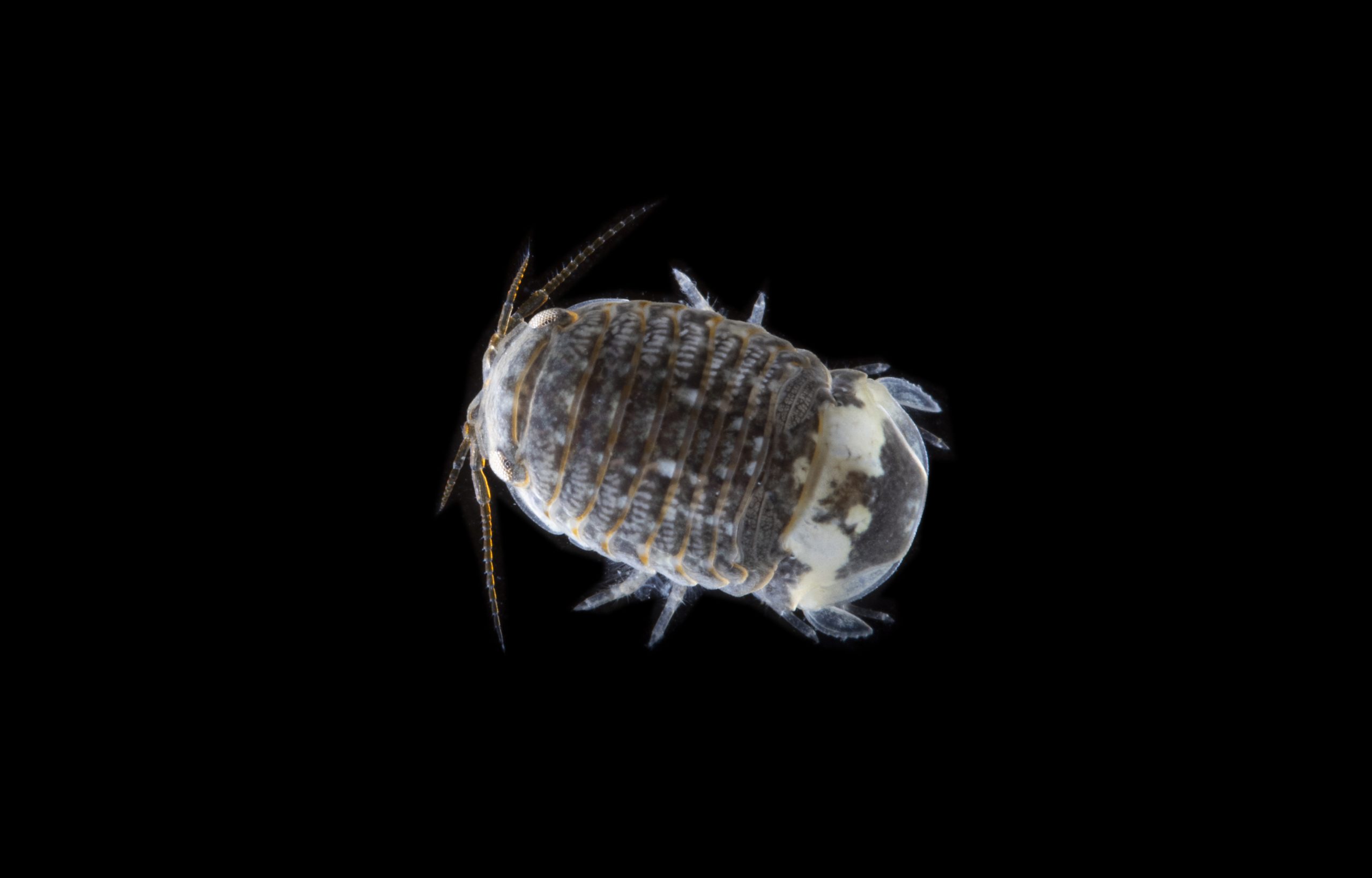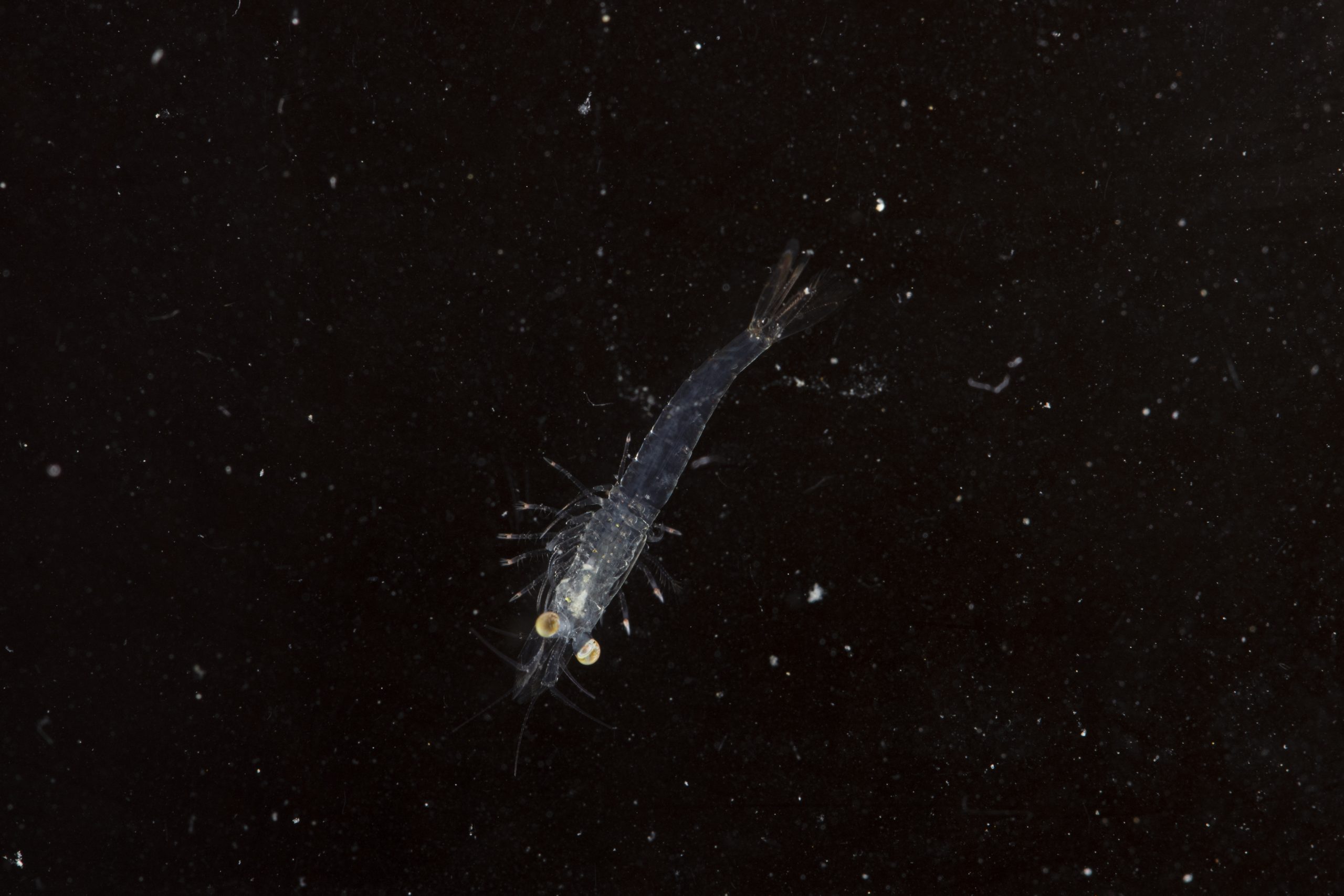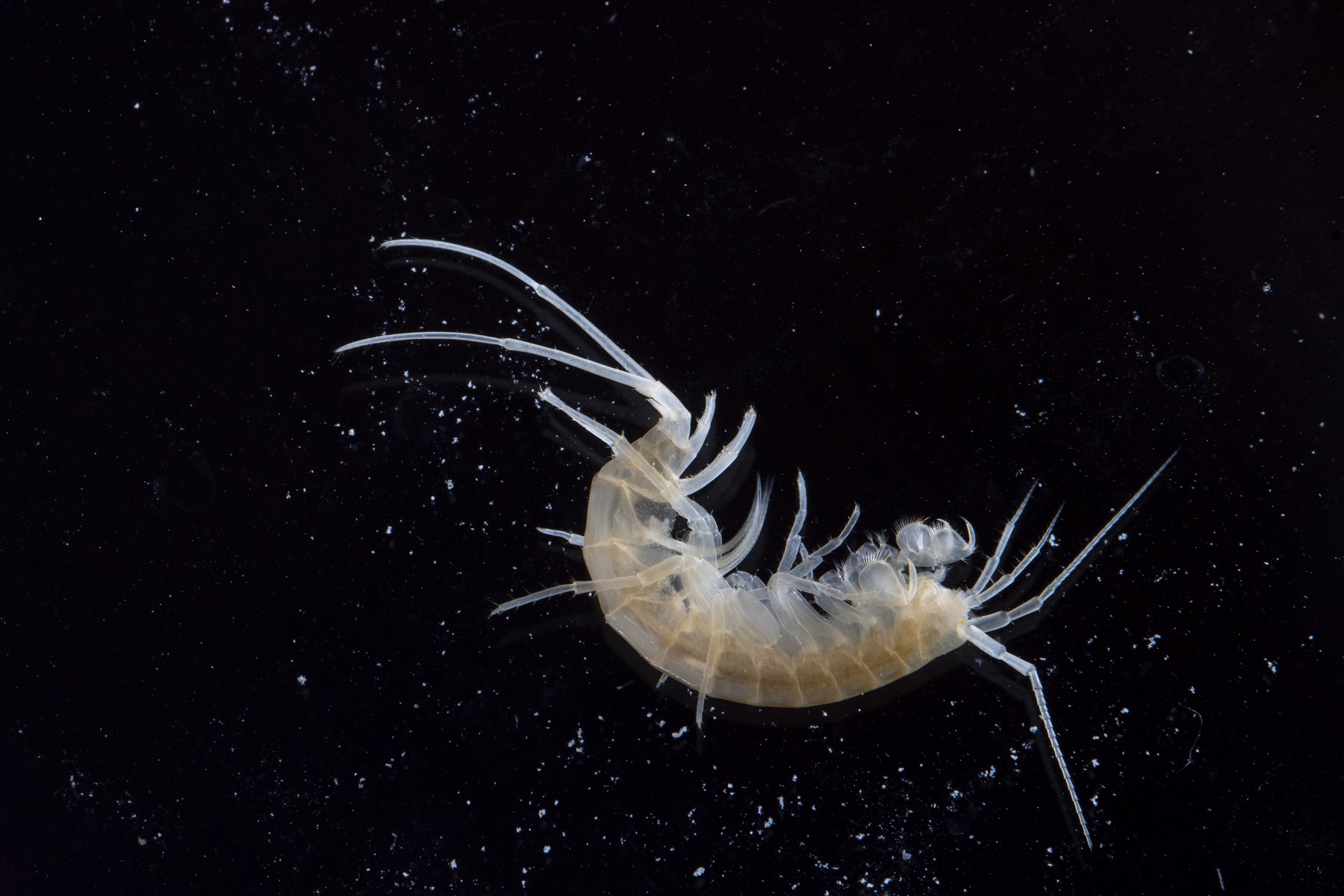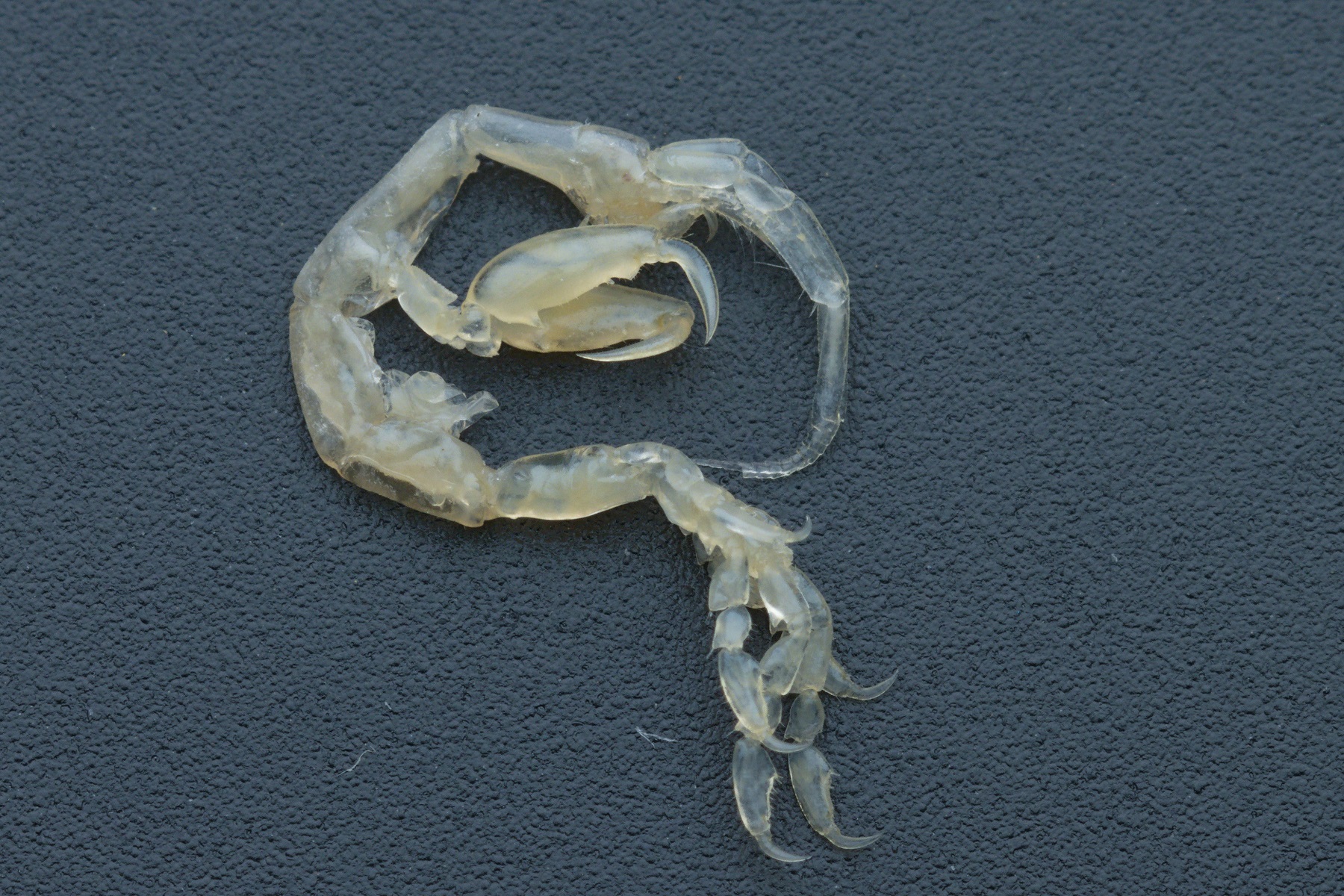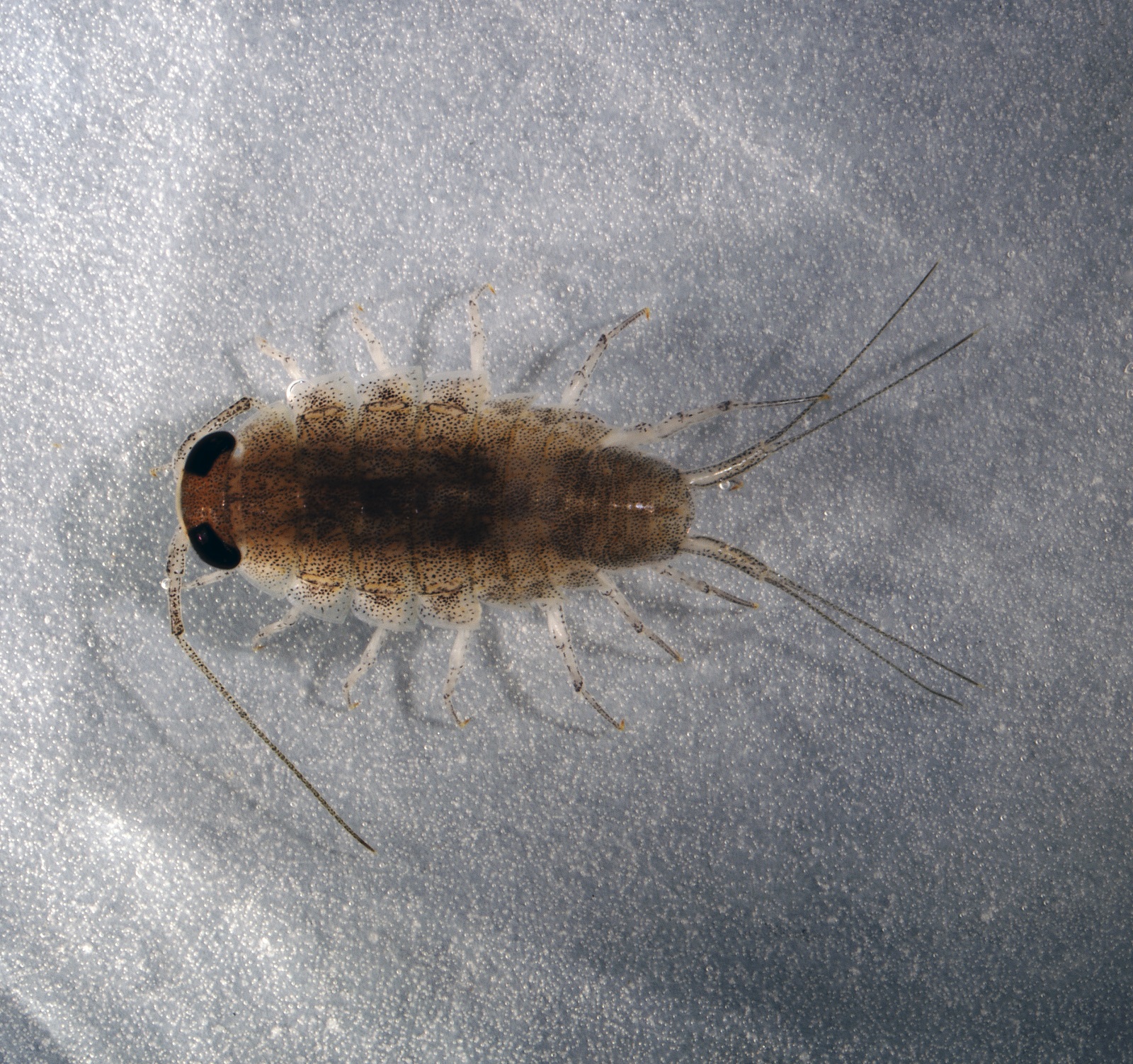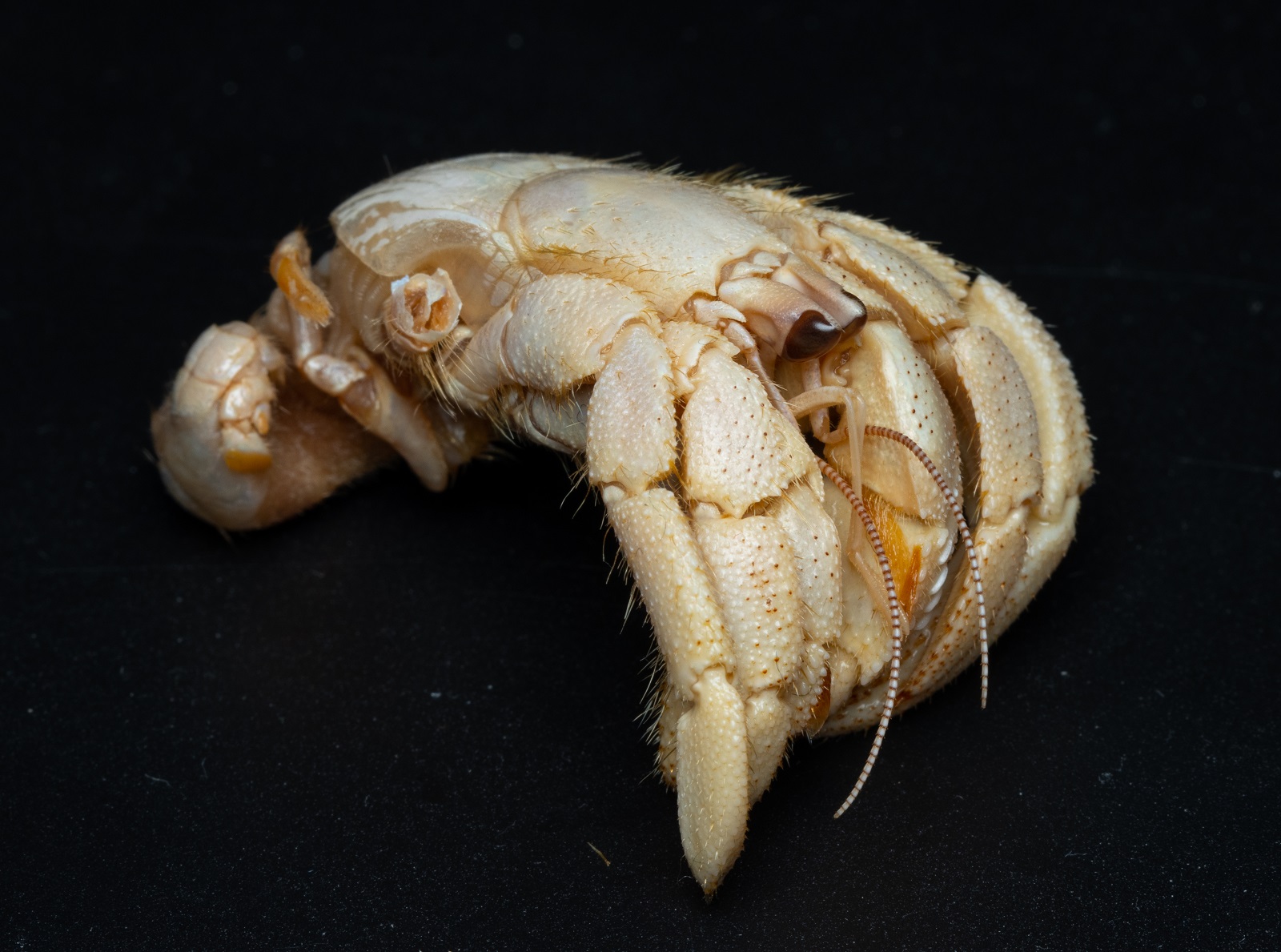- Crustaceans
Niphargus sp.
Well shrimps (Niphargus) are a genus in the order Amphipoda (scuds and relatives). They are crustaceans of different sizes, from as small as 2 millimeters to up to 3 centimeters in length. They have, like other amphipods, characteristically laterally compressed bodies, which consist of a cephalothorax, pereon and pleon (abdomen).
The cephalothorax is comprised of an acron and six anterior body segments. The cephalothorax, which is often termed as a head, bears two pairs of antennae (antennae I and II), a pair of mandibles, a pair of maxillae I, a pair of maxillae II and a pair of maxillipeds. The eyes are absent in well shrimps.
The pereon consists of seven body segments, each carrying a pair of legs (pereopods). There are three different types of pereopods. The first two pairs are gnathopods, which are specialized for grabbing, cleaning and digging. The rest five pairs are used in locomotion. Of those, the anterior two pairs are oriented forward, and the posterior three pairs are oriented backward. At the bases of second to sixth pair of pereopods the gills are located.
The pleon (abdomen) comprises posterior six body segments and a telson. The first three abdominal segments have large lateral plates (epimeres) while the last three are fused into an inflexible urosome. The first three pairs of abdominal appendages are biramous swimming pleopods while the last three pairs are rigid uropods used in propelling off the substrate and burrowing.
Scuds and their relatives are a group of crustaceans with a cosmopolitan distribution. They inhabit practically all available water habitats. Predominant are the marine species, however the scuds are encountered in practically all types of freshwaters, including cave waters. One amphipod family is adapted to life in damp terrestrial environments.
Different morphological features in amphipods have direct functional implications. Flattened and wide bases of pereopods together with epimeres on the abdomen create a deep groove along the ventral side of the body. Beating of pleopods creates a water current along this groove, which respirates the gills in the groove, brings the chemical information from the environment and in filter feeding species also food particles they filter from the water. As long as the animal is bent ventrally in a U-shape the currents entering and exiting the groove cancel out each other and when the animal extends itself the water current along the body acts as a jet propulsion.
The well shrimps (Niphargus) are the largest genus of freshwater amphipods. They inhabit underground waters and waters closely associated with cave systems. Their main mode of locomotion is crawling on one of the flanks of their body. They propel themselves with the urosome and pereopods. They swim only occasionally. They feed on organic detritus, biofilm of fungi and bacteria; some are also predators and scavengers. The reproduction is largely unknown. The females carry up to a few tens of eggs in their marsupia. The developing juveniles are gradually released one by one from the marsupium into the environment. The marsupium is formed by oostegites, which are leaf-like outgrowths at the coxae of pereopods.
More photos
Related arthropods

Authors
- Urban Bogataj,
- Gregor Bračko,
- Teo Delič,
- Cene Fišer,
- Žiga Fišer,
- Rok Kostanjšek,
- Rudi Verovnik,
- Miloš Vittori,
- Valerija Zakšek.
Students Vito Ham, Vesna Jurjevič, Gaj Kušar, and Adrijan Samuel Stell Pičman also participated in the project.
